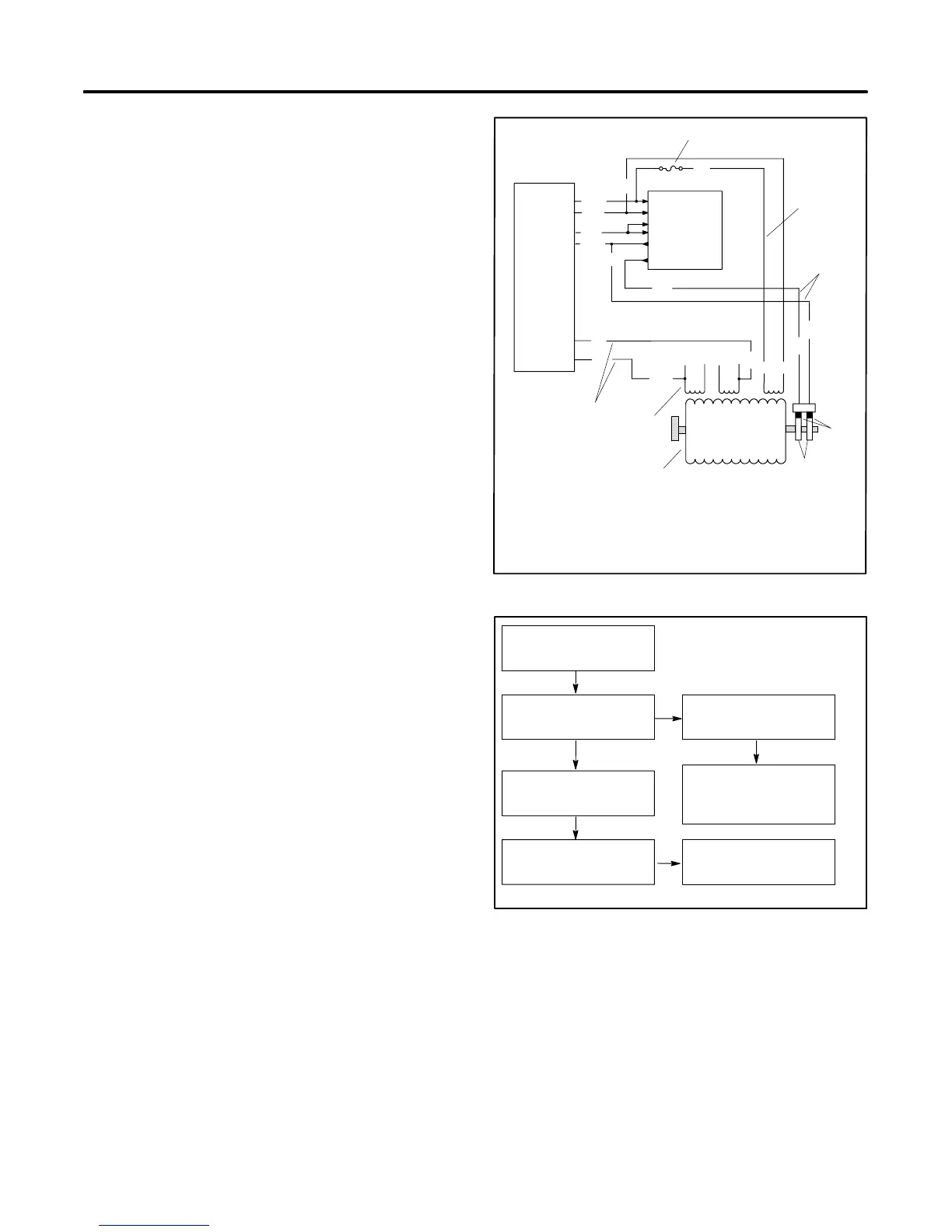TP-6391 9/08 45Section 5 Component Testing and Adjustment
Section 5 Component Testing and Adjustment
5.1 Theory of Operation
Model 5/7.3ECD and 4/6EFCD generator sets utilize a
rotating-field alternator to produce AC voltage. Upon
activation of the generator master switch, DC current
from the battery magnetizes the rotor (field). When the
magnetized rotor rotates within the stator windings, an
electrical voltage develops within the stator. As engine
speed and generator output increase, the SCR module
feeds rectified stator output current to the rotor through
the brushes/slip rings to increase the strength of the
rotor field. As the rotor field increases in strength,
generator output also increases. The ADC 2100
controller monitors the generator output voltage through
leads 11 and 44 and adjusts the DC current from the
SCR module to the rotor to meet load requirements.
SeeFigure5-1.
5.2 Separate Excitation
To determine the cause of no or low AC output, refer to
the troubleshooting flow chart in Figure 5-2. Before
beginning the test procedures, read all safety
precautions at the beginning of this manual. Many of the
test procedures include additional safety precautions.
Check the condition of the alternator fuse before
performing the separate excitation procedure. See
Figure 5-1. The fuse is located on the fuse panel. See
Figure 4-1 for the fuse panel location. If the fuse is not
blown, use the following procedure to separately excite
the generator using an external voltage source (a
12-volt automotive battery).
Separately exciting the generator can identify faulty
voltage regulation by the ADC controller or reveal a
running fault in the rotor and/or stator. An external
power source duplicates the role of the voltage regulator
and excites the generator field (rotor). A generator
component that appears to be in good condition while
stationary may exhibit a running open or short circuit
while moving. Centrifugal forces acting on the windings
during rotation cause a broken circuit to open, or
increasing temperatures cause the insulation to break
down, resulting in a running fault.
FP
11
34
55
21
44
7
5
2
8
6
TP6198
1. Fuse
2. Power lead (55)
3. Excitation to rotor
4. Brushes
5. Slip rings
6. Main field (rotor)
7. Stator windings
8. Sensing leads (11--44)
66
11
1
ADC 2100
SCR
4
(--)
(+)
AC1
AC2
G1
G2
44
66
66
55
55
G
F+
FN
FP
FN
3
Figure 5-1 Generator Schematic
No Generator Output
Separate Excitation
Output within
Specifications
Check Rotor
Check Wiring, Fuses,
SCR Module and
Controller
Check Stator
TP563273
Erratic or No Output
Figure 5-2 Generator Troubleshooting

